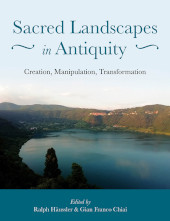2020 - Oxbow Books
eBook
Digital Version
Herunterladen | Kopieren/Einfügen | Drucken
Sacred Landscapes in Antiquity : Creation, Manipulation, Transformation
448 p.
- From generation to generation, people experience their landscapes differently. Humans depend on their natural environment: it shapes their behavior while it is often felt that deities responsible for both natural benefits and natural calamities (such as droughts, famines, floods and landslides) need to be appeased. We presume that, in many societies, lakes, rivers, rocks, mountains, caves and groves were considered sacred. Individual sites and entire landscapes are often associated with divine actions, mythical heroes and etiological myths. Throughout human history, people have also felt the need to monumentalize their sacred landscape. But this is where the similarities end as different societies had very different understandings, believes and practices. The aim of this new thematic appraisal is to scrutinize carefully our evidence and rethink our methodologies in a multi-disciplinary approach. More than 30 papers investigate diverse sacred landscapes from the Iberian peninsula and Britain in the west to Chi
- na in the east. They discuss how to interpret the intricate web of ciphers and symbols in the landscape and how people might have experienced it. We see the role of performance, ritual, orality, textuality and memory in peopleandrsquo;s sacred landscapes. A diachronic view allows us to study how landscapes were andlsquo;rewrittenandrsquo;, adapted and redefined in the course of time to suit new cultural, political and religious understandings, not to mention the impact of urbanism on peopleandrsquo;s understandings. A key question is how was the landscape manipulated, transformed and monumentalized andndash; especially the colossal investments in monumental architecture we see in certain socio-historic contexts or the creation of an alternative humanmade, seemingly andlsquo;non-naturalandrsquo; landscape, with perfectly astronomically aligned buildings that define a cosmological order? Sacred Landscapes therefore aims to analyze the complex links between landscape, andlsquo;religiosityandrsquo; and society, d
- eveloping a dialectic framework that explores sacred landscapes across the ancient world in a dynamic, holistic, contextual and historical perspective. [Publisher's text].
- Special access authorizations may apply; please contact us for further information.
-
Informationen
ISBN: 9781789253344
THEMENBEREICHE



